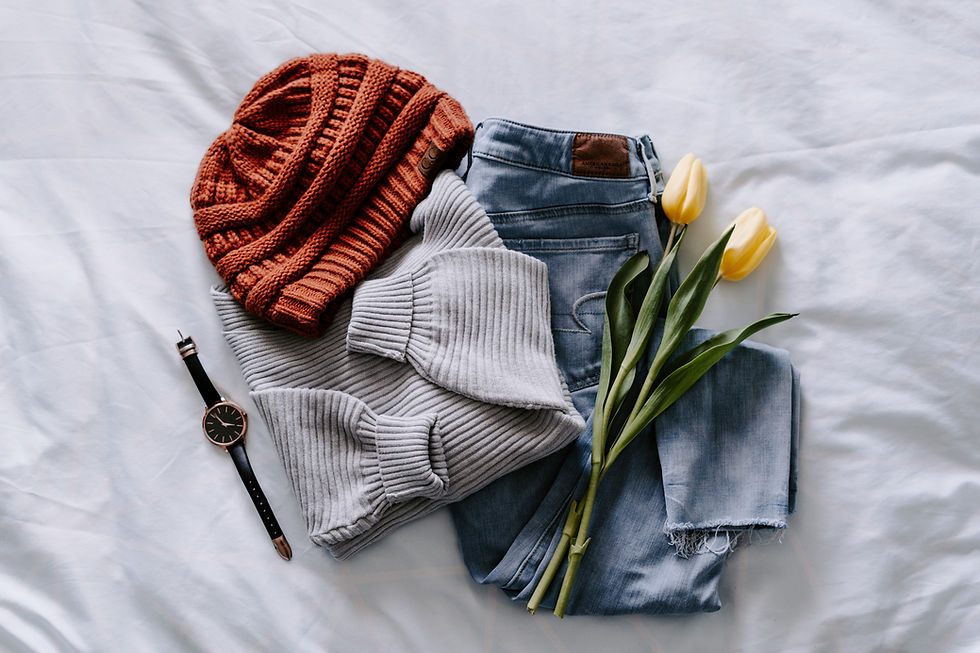It's Not You, It's the Clothes
- Grace McClung

- Apr 6, 2021
- 2 min read
There I am, standing in a cramped dressing room with those awfully bright fluorescent lights that make me look tired and ghostly. The mirror is smudged, the floor is dirty, and the hooks are stacked with clothes I will not be leaving with.
Looking at myself, I can’t decide if I should laugh or cry because of how ridiculous I look in these shorts. This is not how they looked on the mannequin. And I’m standing there wondering, is this really how I look? Is it just me?
For anyone asking themselves the same questions, the answer is no and it’s not just you. It can be tempting to blame yourself and the way you look for why something doesn’t fit right, especially when you see someone who can pull it off just fine. And it’s easy to believe that you should fit the clothes, that if you don’t, you’re the one in the wrong, not the brand.
But the truth is, the fashion industry is seriously flawed. The size discrepancies you’ve probably experienced among different brands and retailers are results of a generalized industry that fails to consider a multitude of body shapes and sizes.
The sizes we are forced to shop from today stem from a misguided study of women’s sizing in the 1900s that only included white women and the original sizes of 8 to 42. After 1983, clothing companies began to find ways to use women’s sizing as a marketing ploy, using what is known as “vanity sizing” that artificially lowers the size on the label to get people to buy more.
Clothing is also designed to fit a specific demographic of women that is actually a terrible representation of the majority of women’s bodies. In the US, the height of the average woman is 5’5 with a weight of about 170 pounds and an average clothing size of 14. But many brands only go up to size 12, catering to just a small percentile of women.
And what do these numbers mean, anyway? Some brands carry sizing from 00 to 16, while others carry 22 to 34. I have no idea what my size is, and I’ve learned to stop wasting time trying to figure it out.
It is important to remember that it’s not you, it’s the clothes. Clothes are supposed to fit you, not the other way around. You shouldn’t have to blame yourself for an outdated industry that, like many other institutions in society, tries to capitalize on women’s insecurities.
We don’t live in a one-size-fits-all world, no matter how hard exclusive brands like Brandy Melville try to make us believe it. So the next time you see a model or fashion guru on Instagram looking flawless in an outfit, remind yourself that many of these women get their clothing tailored, and even more of them had to go through the same tedious shopping experience to find it that we go through.
Ignore the numbers, avoid exclusive brands, don’t compare yourself to plastic mannequins, and thrift more often! I’ve found that thrifting feels much more low-stake because even if something doesn’t fit, they’re other people’s rejects anyway.
We may be stuck in a faulty fashion industry, but we can either blame ourselves or the brand, and I can tell you from experience that the latter is freeing.






Comments